By Jean Stern, Special to the Independent
Laguna Beach is widely know as an Artists’ Colony, and today, looking at

the abundance of art galleries, one would certainly agree with the designation. Yet, the city achieved that distinction largely through the efforts a century ago of the plein-air (outdoor) painters of the early twentieth century. The best known of Laguna’s early resident artists was William Wendt.
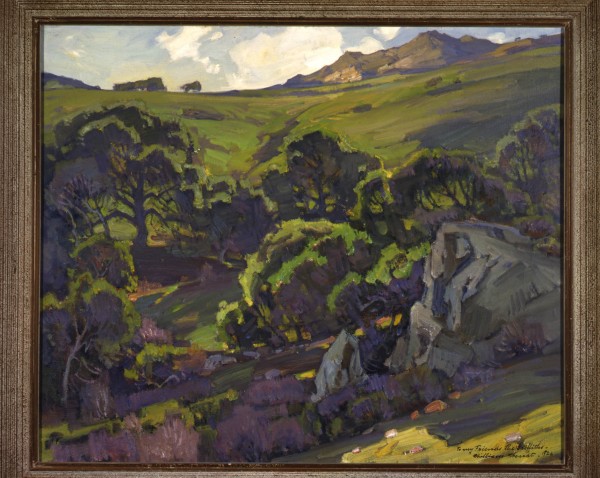
courtesy of The Irvine Museum.
Wendt (1865-1946) was born in Germany and immigrated to the United States in 1880, settling in Chicago where he worked in a commercial art firm. Essentially self-taught, he did however attend evening classes at the Art Institute of Chicago, but for only a brief period. Not interested in figure studies, he turned to painting landscapes and quickly became an active exhibitor in various Chicago art shows. One of his landscapes earned him the Second Yerkes Prize at the Chicago Society of Artists exhibition in 1893.
In Chicago, Wendt met and befriended artist George Gardner Symons (1862-1930), also a landscape painter, and together they made a number of trips to California between 1896 and 1904, often staying in Laguna Beach. In 1898, they visited the art colony at St. Ives in Cornwall, England, and produced many fine paintings. Upon his return, Wendt sent works from each of those trips for exhibition at the Art Institute of Chicago.
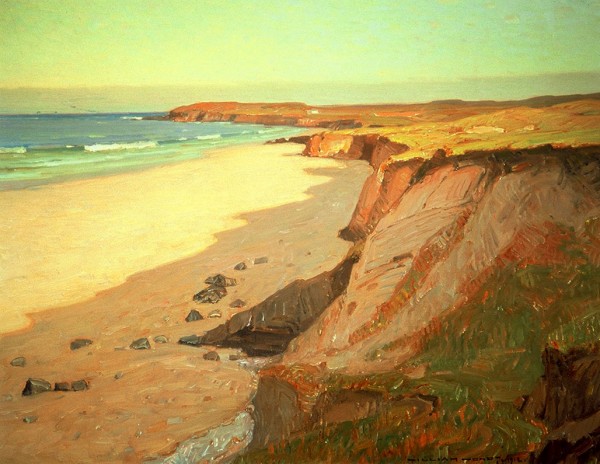
Wendt settled in Los Angeles with his wife, sculptor Julia Bracken, in 1906. Already a successful painter, he quickly became a leading member of the art community and was a founding member of the California Art Club in 1909. He moved his home and studio to Laguna Beach in 1912, the same year that he was elected to the National Academy of Design. In 1918, he and a close-knit group of fellow artists founded the Laguna Beach Art Association, and although somewhat shy and reclusive, he was a superb organizer and soon became Laguna’s most important resident artist-teacher.
Arthur Millier, the art critic for the Los Angeles Times, called Wendt “the man who has most truthfully pictured Southern California.” To Wendt, a devoutly religious man, nature was a manifestation of God and by painting landscapes he viewed himself as nature’s faithful interpreter.
In a letter to a friend, Wendt wrote: “The perfection of this spring day and the gladness thereof make one think of Genesis when the earth was young and morning stars sang to each other. The earth is young again. The peace, the harmony which pervades all, give a Sabbath-like air to the day, to the environment. One feels that he is on holy ground, in Nature’s Temple…The perfume of the flowers and of the bay tree are wafted on high, like incense…The birds sing sweet songs of praise to their Creator. In the tops of the trees, the soughing of the wind is like the hushed prayers of the multitude in some vast cathedral. Here the heart of man becomes impressionable. Here, away from the conflicting creeds and sects, away from the soul-destroying hurly-burly of life, it feels that the world is beautiful, that man is his brother, that God is good.”
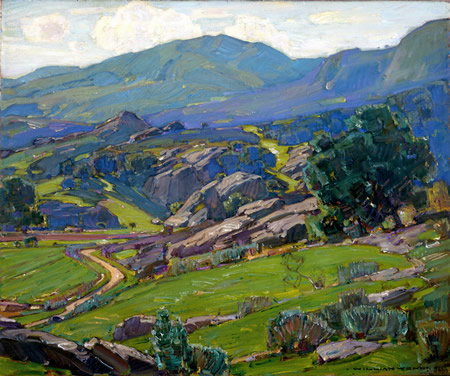
collection and courtesy of Laguna Art Museum.
Only rarely did Wendt include people or animals in his landscapes. He worked out of doors, sometimes sketching and sometimes completing large, finished works. His early works displays the feathery brush strokes and hazy atmosphere indicative of Impressionism, but in his later works, after about 1918, he employed a distinctive block-like brushwork giving solidity to his renditions of natural forms.
A prolific painter, he was known as the “dean” of Southern California’s landscape painters.
Exhibiting regularly in Los Angeles, Chicago, and New York, Wendt received numerous awards for his works. Among these were a bronze medal, Pan-American Exposition, Buffalo, 1901; a silver medal, Louisiana Purchase Exposition, St. Louis, 1904; and a silver medal, Panama-Pacific International Exposition, San Francisco, 1915. In 1925 he received a gold medal at the Pan-American Exhibition in Los Angeles for Where Nature’s God Hath Wrought, which is now in the collection of the Los Angeles County Museum of Art.
Stern is the executive director of The Irvine Museum and is the author of numerous books and articles on California Impressionism, including monographs on artists such Franz A. Bischoff, Alson S. Clark, Sam Hyde Harris and Elsie Palmer Payne.




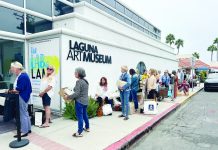
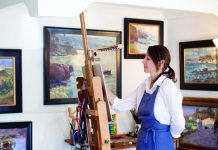
[…] hometown in 1946, earned the title “dean” of Southern California artists, Stern wrote in a 2006 essay on […]
[…] Wendt (1865-1946) was a self-taught painter who rose to become what many consider the most important 20th […]